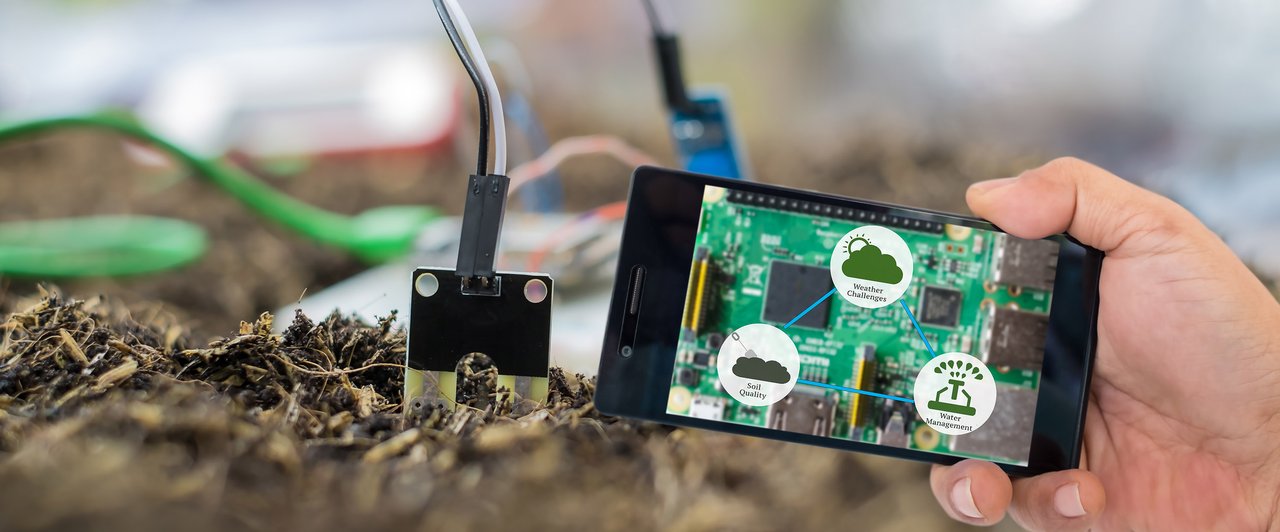Precision Agriculture - Farming for the future
Digital solutions could be the key to producing more food while protecting the environment
It didn’t take a pandemic for the world to recognise the vulnerability of global food production. In 2016, when nations pledged their commitment to the Paris Agreement they took stock of the urgent need to end hunger and safeguard food security by redressing climate change. However, the coronavirus outbreak has catapulted the challenges surrounding food resilience into the limelight; countries in every continent are dealing with hampered supply chains and farmers are grappling with a volatile market as well as disruptions to the labour forces they need to support seasonal production. The need for efficient and sustainable farming solutions has never been greater.
For centuries, farmers used animals and ploughs to produce the world's food. In the 20th century, machines took over, allowing greater yields at lower prices. Today, in response to the ongoing challenges facing the food and agriculture industries, another production revolution is underway: precision farming.
Last year, Yara, the Norwegian chemical company, launched Atfarm, technology that uses satellite data to take much of the guesswork out of deciding what inputs fields need. Yara also produces N-Sensor, a tractor-mounted device that measures light reflectance of the crop canopy - data that can be used to calculate plants' exact nitrogen requirements.
"Digital farming tools and agriculture are really just at the beginning of what could be the next big revolution," says Greg Levow, senior manager of computational agronomy and digital farming at Adapt-N Solution, a Yara company. "Over the next years and decades, we are going to see a tremendous amount of progress and adoption in this space."
One of humanity's biggest challenges is ramping up food production while putting agriculture back on a sustainable path
Digital farming solutions are starting to play a bigger role in agriculture, which is translating into increased yields at lower costs. Crucially, these advances hold the promise of tackling one of the biggest challenges facing humanity: ramping up food production while putting agriculture back on a sustainable path.
It is important, therefore, that such efforts aren’t disrupted by the coronavirus crisis. According to the World Bank, the global population will reach 9bn by 2050, a rise that will require producing 50 per cent more food than we do today.
Yet physical resources to produce that food are diminishing: the United Nations' Food and Agriculture Organisation (FAO) has calculated that arable land per capita decreased from 0.45 hectares in 1961 to just 0.25 hectares in 2000.
By using digital technology and switching to precision farming, the hope is to produce more using fewer resources
The problem of having to produce substantially more food comes as the planet is on a climatic knife edge. The FAO says that one-third of all land is severely degraded as a result of erosion, chemical pollution and over-fertilisation.
Global weather patterns are becoming more extreme and there is now overwhelming consensus that global warming is occurring - and at an unsustainable rate.
One of the contributors is farming. According to the World Bank, agriculture consumes 70 per cent of the world's fresh water supply. Much of the phosphorous and nitrogen it consumes ends up in waterways and oceans, disrupting fish stocks and other aquatic life. Almost four-fifths of US continental coastal waters now suffer algae overgrowth - a direct consequence of nutrient pollution.
One-third of all land is severely degraded as a result of erosion, chemical pollution and over-fertilisation
By using digital technology and switching to precision farming, the hope is to produce more using fewer resources - or "decoupling" economic growth from social and environmental impact.
Systems are entering the market that can keep track of crops, measuring their performance and exact needs. In turn, that can lead to using less fertiliser and water.
Onfarm, a California-based company, has built an app that displays and analyses data from multiple sources, providing farmers with a one-stop databank that they can use to make better and more precise decisions. In a demonstration of how far precision farming could evolve, it states that by 2050, the average farm could be creating 4.1m data points each day compared with just 190,000 in 2014.
Precision farming has even spawned start-ups such as Local Roots, a US company that turns used shipping containers into grow boxes with proprietary technology that produce as much leafy greens as five acres of land but using only 1 per cent of the water. Its produce has already found its way to local restaurants, Elon Musk's Space X company and even the United Nations.
In and of itself, precision farming stands little chance of solving the dual challenge of the food crisis and climate change. But as Levow of Adapt-N Solution puts it, "there's a recognition that data, both from farms and other sources combined with computing power and science has an opportunity to really advance profitability, performance and environmental impact."


